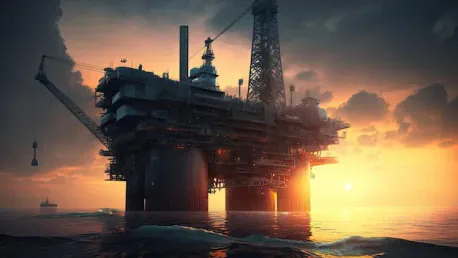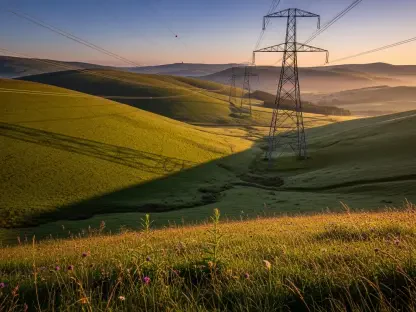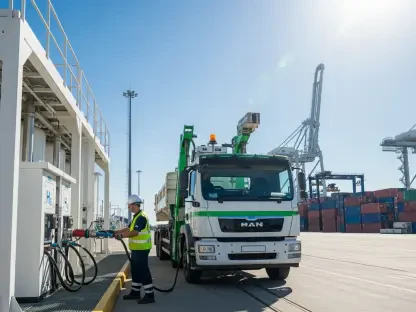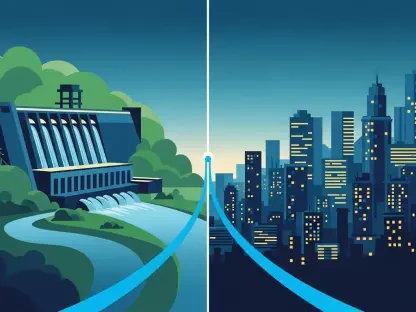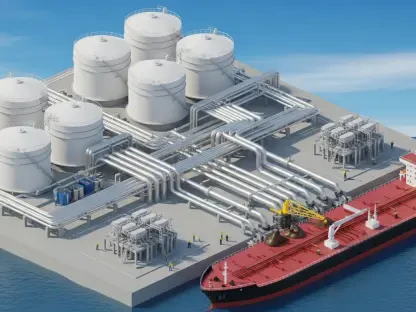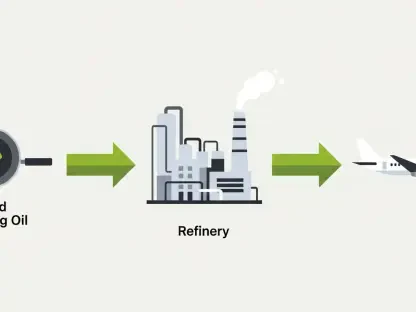In this interview, we have Christopher Hailstone, an authority in energy management, renewable energy, and electricity delivery. As a utilities expert, Christopher offers valuable perspectives on grid reliability and security. Today, we are diving into BP’s latest venture, the Cypre project, which is a significant development in their portfolio.
Can you provide a brief overview of the Cypre project and its significance within BP’s portfolio?
The Cypre project marks a significant milestone for BP, emphasizing our commitment to expanding our gas supply capabilities. Located offshore Trinidad and Tobago, Cypre is our third subsea development, and its integration with the existing Juniper platform is a strategic move. This project’s success underpins our broader strategy to enhance our upstream segment and ensure a reliable supply of oil and gas.
What were some key milestones achieved during the development of the Cypre gas field?
The development of the Cypre gas field saw several critical milestones. Notably, the completion of the first phase at the end of 2024, which included four wells, and the commencement of subsea installation work in November 2024. Bringing the field online on April 3, 2025, was a major accomplishment, and we are now gearing up for the second phase, which is set to begin in the latter half of this year.
The Cypre project is located 78 kilometers off the southeast coast of Trinidad. How does its location impact the logistics and operations of the project?
The offshore location presents unique logistical challenges, from transportation of equipment and personnel to dealing with the dynamic marine environment. Nevertheless, this location was chosen for its strategic value—situated within the East Mayaro Block in relatively shallow waters of approximately 80 meters, it enables efficient integration with our existing infrastructure, thereby optimizing production and minimizing additional investments.
How many wells are included in the Cypre development, and how are they integrated with the existing Juniper platform?
Cypre will consist of seven wells tied back to the Juniper platform. This integration is crucial as it leverages our existing infrastructure, enhancing operational efficiency and reducing costs. The Juniper platform serves as a central hub, facilitating the swift and reliable processing of extracted gas.
What is the expected peak production capacity of the Cypre gas field in terms of barrels of oil equivalent per day (boed) and standard cubic feet of gas daily?
At its peak, Cypre is projected to deliver around 45,000 barrels of oil equivalent per day (boed) and approximately 250 million standard cubic feet of gas daily. This level of production significantly bolsters our output capabilities and aligns with our strategy to support global energy markets.
Can you elaborate on the two phases of the Cypre project?
The first phase, completed by the end of 2024, involved the drilling of four wells and extensive preparatory work, such as subsea installation. The forthcoming second phase, scheduled to start in the second half of 2025, will see the addition of three more wells. This phased development approach allows us to manage resources efficiently and mitigate risks associated with large-scale operations.
BP’s EVP of Gas and Low Carbon Energy emphasized the importance of executing major projects safely and consistently. What measures have been put in place to ensure safety and consistent execution at Cypre?
Safety and consistency are paramount in our operations. For Cypre, we have implemented rigorous safety protocols, continuous monitoring systems, and regular safety drills. Our commitment to safety permeates every level of the project, ensuring that all activities are conducted with the highest regard for the well-being of our workforce and the environment.
How does the Cypre project align with BP’s recently announced strategy to grow its upstream segment and focus on oil and gas?
Cypre is central to BP’s renewed focus on solidifying our oil and gas foundations. This project illustrates our dedication to maximizing the potential of our existing assets and infrastructure, thereby enhancing our upstream portfolio. It also demonstrates our ability to adapt and thrive, further cementing our position as leaders in the energy sector.
How will the production from Cypre contribute to BP’s overall growth targets and the global energy market?
The production from Cypre will strengthen BP’s portfolio, contributing significantly toward our goal of achieving 250,000 barrels net of oil equivalent per day from ten major projects by 2027. By bolstering our gas output, Cypre will play a pivotal role in meeting global energy demand, particularly in regions reliant on gas for their energy needs.
According to BP, the start-up of Cypre is one of ten major projects expected to be operational by 2027. Could you provide more details about these projects and their expected contribution to BP’s production goals?
Indeed, Cypre is one of ten major projects BP aims to bring online by 2027. These projects span across various geographies, including deepwater developments and onshore expansions. Collectively, they are expected to significantly boost our output, with an anticipated combined production of 250,000 barrels net of oil equivalent per day. Each project is integral to enhancing our operational efficiency and meeting our strategic growth targets.
Can you describe the role of existing infrastructure in maximizing production from shallow water acreage and its significance for the Cypre project?
Utilizing existing infrastructure, such as the Juniper platform, is a strategic advantage for the Cypre project. This approach maximizes production capability while minimizing additional capital expenditures. It allows for the swift integration of new wells and accelerates production timelines, which is essential for maintaining our competitive edge in the industry.
BP Trinidad and Tobago’s President mentioned the company’s commitment to fulfilling existing gas supply commitments. How does the Cypre project help achieve this objective?
Cypre is pivotal in meeting our existing gas supply commitments. The additional gas produced from this field will ensure we continue to meet the demands of our contractual obligations, supporting Trinidad and Tobago’s energy needs. This project affirms our long-term investment in the region and our commitment to sustainable energy supply.
BP holds a 70% interest in bpTT, with Repsol holding the remaining 30%. Could you explain the significance of this partnership and how it supports the development of projects like Cypre?
The partnership with Repsol, holding a 30% interest in bpTT, is instrumental to our operations. This collaboration brings together complementary strengths and expertise, ensuring the successful development and operation of projects like Cypre. It fosters innovation, shares risk, and maximizes resource efficiency, contributing to the project’s overall success.
What were the recent developments with the Ginger gas development and the Frangipani exploration well, and how do they fit into bpTT’s strategy?
The final investment decision for the Ginger gas development and the discovery of gas at the Frangipani exploration well are significant strides for bpTT. These developments align with our strategy to explore and capitalize on new opportunities, ensuring sustained growth and energy supply. They highlight our proactive approach to exploration and development in Trinidad and Tobago.
Can you provide insights into BP’s exploration and production plans in Trinidad and Tobago and how they contribute to the nation’s energy future?
BP has ambitious plans for exploration and production in Trinidad and Tobago. Our focus is on leveraging new technologies, enhancing operational efficiencies, and discovering new reserves. These efforts are designed to ensure we contribute meaningfully to the nation’s energy security and economic development, supporting a sustainable energy future for Trinidad and Tobago.
Lastly, what can we expect next in terms of project developments or milestones from BP Trinidad and Tobago or BP globally?
Looking ahead, BP intends to continue expanding its portfolio with a series of projects slated for development. In Trinidad and Tobago, we will focus on maximizing production from existing assets and exploring new opportunities. Globally, we aim to maintain our momentum with the rollout of our ten major projects by 2027, reinforcing our position as a leading energy provider.
Do you have any advice for our readers?
